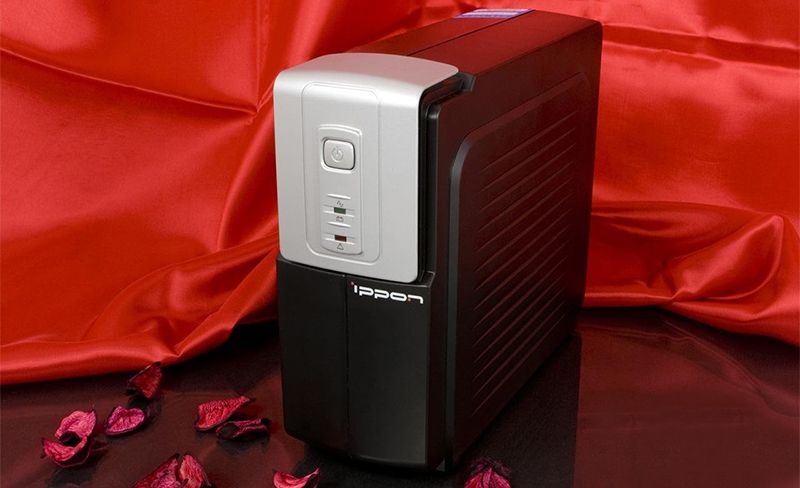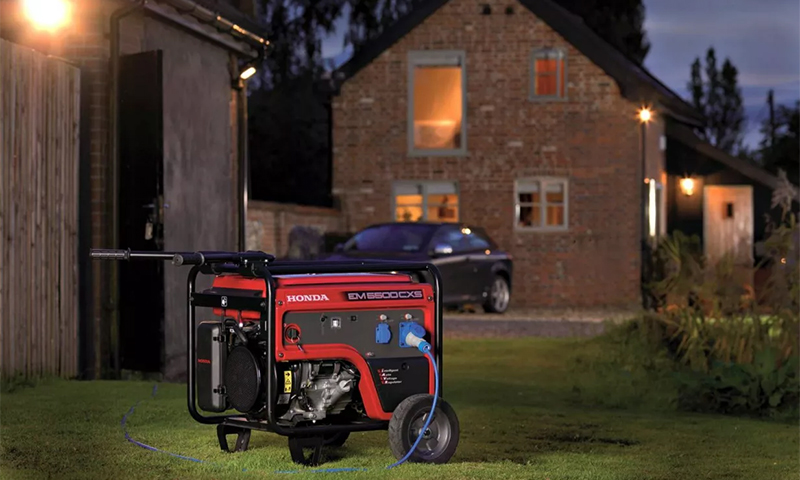Support the work of home appliances, heating and pumping equipment with unstable voltage will help the UPS - uninterruptible power supply. If the computer is connected to the UPS, the PC user will be able to correctly shut down during a sudden power outage. Purchasing a battery backup unit with sufficiently large capacity will allow the heating system in a private house to work for several hours while there is no voltage in the network.

Content:
The best manufacturers of UPS - which firm to choose
Most of the uninterruptible power supplies on the Russian market are made in China.
By purchasing the UPS of one of the brands listed below, you can be confident in the quality of the device, as the products have proven themselves in the best way:
- APC;
- Powercom;
- Ippon;
- P-Com;
- INELT.
The advantages and disadvantages of the most popular models can be found by reading the article. best uninterruptible power supplies according to customer reviews.
The principle of operation and the device UPS

The main elements of the device and modules:
1. Power;
2. Distributional;
3. Control, management and display;
4. Rechargeable batteries.
The principle of the UPS is as follows:
1. If the mains voltage is stable and meets the specified limits, it is supplied to the output of the uninterruptible power supply. The charge of the built-in rechargeable batteries is maintained from external power.
2. If the mains voltage is gone, or it has excessively deviated from the nominal, the UPS output is connected to the built-in inverter, which converts the direct current from the battery to the alternating current of the load.
The duration of the UPS operation depends on the battery capacity, inverter efficiency and consumer power.
Types of uninterruptible power supplies
Reserve

These are the most simple and common devices. The main part of bespereboynik, used for the computer, refers to this species.
Most computers use switched-type power supplies. They allow the device to transfer the shortest failure of the main power, as they accumulate a certain amount of energy in the built-in capacitors. Since the delay of a few milliseconds that occurs when switching from the main power source to the battery of the device is not critical, it is acceptable to use a backup UPS.
If the computer is connected to a backup UPS, the computer user has a few minutes to save the necessary information and correctly exit open applications during a power outage.
Standby UPS is designed for use in a network with a stable voltage without drops. If you use the device in a network where power failures occur, the batteries will discharge quickly and fail quite quickly.
Benefits:
- Simplicity of design;
- Affordable price;
- Low power consumption;
- Low noise.
Disadvantages:
- The lack of a voltage stabilization function does not allow the device to be used in networks with low-quality voltage;
- Unable to quickly recover battery power with frequent switching. This reduces the lifetime of the device;
- The switch device is triggered within 6-20 milliseconds, which has an undesirable effect on some electrical appliances.
Line Interactive

In terms of technical parameters, linear-interactive uninterruptible power supplies exceed backup UPSs, they are more stable in operation.
Devices of this type are equipped with an autotransformer, which compensates for oscillations in the event of a voltage mismatch in the network at the nominal level. The switching time of the device is reduced due to the combination of the inverter with the converter, which are connected to the output.
The feature of a bespereboynik is that by filtering and stabilizing the voltage before it is supplied to the consumer, it does not change the wave-like nature of the current consumed. The device functions in the same way as a backup UPS - if there is voltage in the network, it feeds the consumer from the network.
When there is no voltage, the inverter feeds the consumer from the battery, while the input switch of the uninterruptible power supply opens. If the network voltage is, but does not meet the norm, the device switches the autotransformer taps and supplies the required voltage without transferring to the battery.
This type of UPS is recommended when voltage deviations from the nominal are insignificant.
Benefits:
- Low cost;
- Have the maximum efficiency of all types of UPS (from 96 to 98%);
- Provide a sinusoidal voltage at the output, which reduces the voltage spikes and pulses when switching power supply;
- Providing power to the load at high or low voltage without switching to battery power can significantly increase the battery life;
- A small number of structural elements and a slight degree of heating of the power converter contribute to a long service life and a high degree of reliability.
Disadvantages:
- Non-zero switching time (4-6 ms);
- Compared with double conversion UPSs provide an average level of protection;
- Not effective at filtering high frequency noise and suppressing overvoltage.
UPS with double converter

Devices convert energy twice. At the first stage, the alternating current with all its distortions is converted into direct current, at the second stage, direct current is converted into “ideal” alternating current.
If the characteristics of the AC input are not within the allowable range, the UPS applies voltage to the load from the battery, and the switching takes several milliseconds. The inverter’s power supply during this transition is provided by a capacitor, which provides a continuous output voltage supply.
In addition to the double conversion, the rectifier unit of the device compensates for the power factor (that is, it compensates for sinusoidal waves of the incoming current).
Benefits:
- The ability to adjust the output frequency, and the possibility of frequency conversion (for example, from 40 Hz to 50 Hz and vice versa);
- Compact and light weight;
- Regardless of the type of load, the power factor is compensated;
- Even with significant distortions and voltage deviations from the nominal, battery operation is less common.
Disadvantages:
- Greater power consumption;
- Significant heat dissipation, requiring effective lead;
- A large number of components in the device and their increased temperature associated with the continuous processing of energy, reduce the reliability of the bespereboynik and reduce its service life;
- Lose in the effectiveness of linear-interactive devices (depending on the design features have an efficiency of 85% to 92%).
UPS selection options

Power
When selecting the power, the devices are based on the power indicator of the appliance, for which it is designed. It should be noted that the power of electrical devices is indicated in watts (W), and the power of the UPS - in volt-meters (VA).
To determine how much power the bespereboynik is designed, you need to multiply its total power by a factor of 0.8. For example, the total power of the UPS is 600 VA. 600 VA * 0.8 = 480 watts.
You must also take into account the amendment to the starting currents of electrical equipment.On average, the power of the UPS should exceed the power serviced by 20-40%.
If the UPS is intended to be used for a group of electrical appliances, it is necessary to determine the total nominal consumption of the entire group, taking into account the required power reserve, or calculate it as follows.
Efficiency
Efficiency determines the efficiency of use of the device. The result of inefficient work will be unreasonable costs.
Efficiency is calculated by the formula:
ŋ = (Pout / Pin) * 100%,
where Pout is the output power, Pin is the input power.
Examples of the effective and inefficient use of UPS:
1. Inefficient: the power of the UPS is 800 W, the power of the connected electrical equipment is 300 W. About 70 W is spent on self-sufficiency. The final efficiency according to the formula is 41%;
2. Effective: the power of the UPS is 800 W, the power of the connected electrical equipment is 650 W. Efficiency - 89%.
Battery life
The indicator determines the duration of the UPS operation during a power outage. Running time depends on battery capacity and load consumption. As a rule, household uninterruptible power supplies support the operation of electrical appliances from 4 to 15 minutes.
The presence of the mode "bypass"
The mode is designed to power consumers to bypass the built-in inverter directly from the network. This allows you to repair bespereboynik if necessary without turning off the power supply of electrical appliances.
If the mains supply works well, you can transfer the load from the inverter to the bypass, which saves energy.
Connectors
Before purchasing a device, you need to calculate the number of necessary output connectors for connecting electrical appliances, and when buying, make sure that they match.
Most models have the following connectors:
1. To connect to the network 220;
2. To protect network and telephone lines;
3. To control the device from a computer;
4. For monitoring and diagnostics (USB, COM).
Outlets:
1. To connect to the battery (can be under the "plug" and under the power cable IEC);
2. For connection to a stabilizer other than battery.
Indication
Information about the operation of the device in different modes and the battery charge in budget models is displayed using LED indicators. Devices of the middle and high price category are equipped with an LCD display on which information is displayed.
Which uninterruptible power supply to choose

1. For short-term support of the work of low-power equipment (computer, fax machine), you can purchase a backup UPS;
2. A computer needs a UPS with a capacity that exceeds the power of the PC by 20-30%.
3. For a gas boiler equipped with high-precision electronics, supporting the operation of heating equipment in automatic mode, it is desirable to purchase a UPS with a power reserve of 35-40%;
4. It is better to give preference to models with the possibility of replacing batteries, since on average, the battery runs from three to five years.
5. For a pump or boiler, a backup UPS can be purchased only if the equipment is connected to a voltage regulator or to some other device protecting it from overvoltage (for example, to a voltage control relay);
6. Double conversion and linear-interactive UPSs can be connected to the boiler without a stabilizer, since the device itself levels the voltage. Bespereboynik must have a sinusoidal waveform at the output;
7. In a private house with a developed infrastructure, including a heating boiler, the pump can be installed line-interactive bespereboynik or permanent, by calculating the required power.
How much does an uninterruptible power supply

1. Reserve - from 2.2 to 4 thousand rubles;
2. Line-interactive - from 2.5 thousand rubles to 177 thousand rubles;
3. With double conversion - from 16 thousand rubles to 171 thousand rubles;
4. For a computer - from 2.2 thousand rubles;
5. For a heating boiler - from 2.8 thousand rubles;
6. For the pump - from 2.8 thousand rubles.
It will be interesting to friends too










